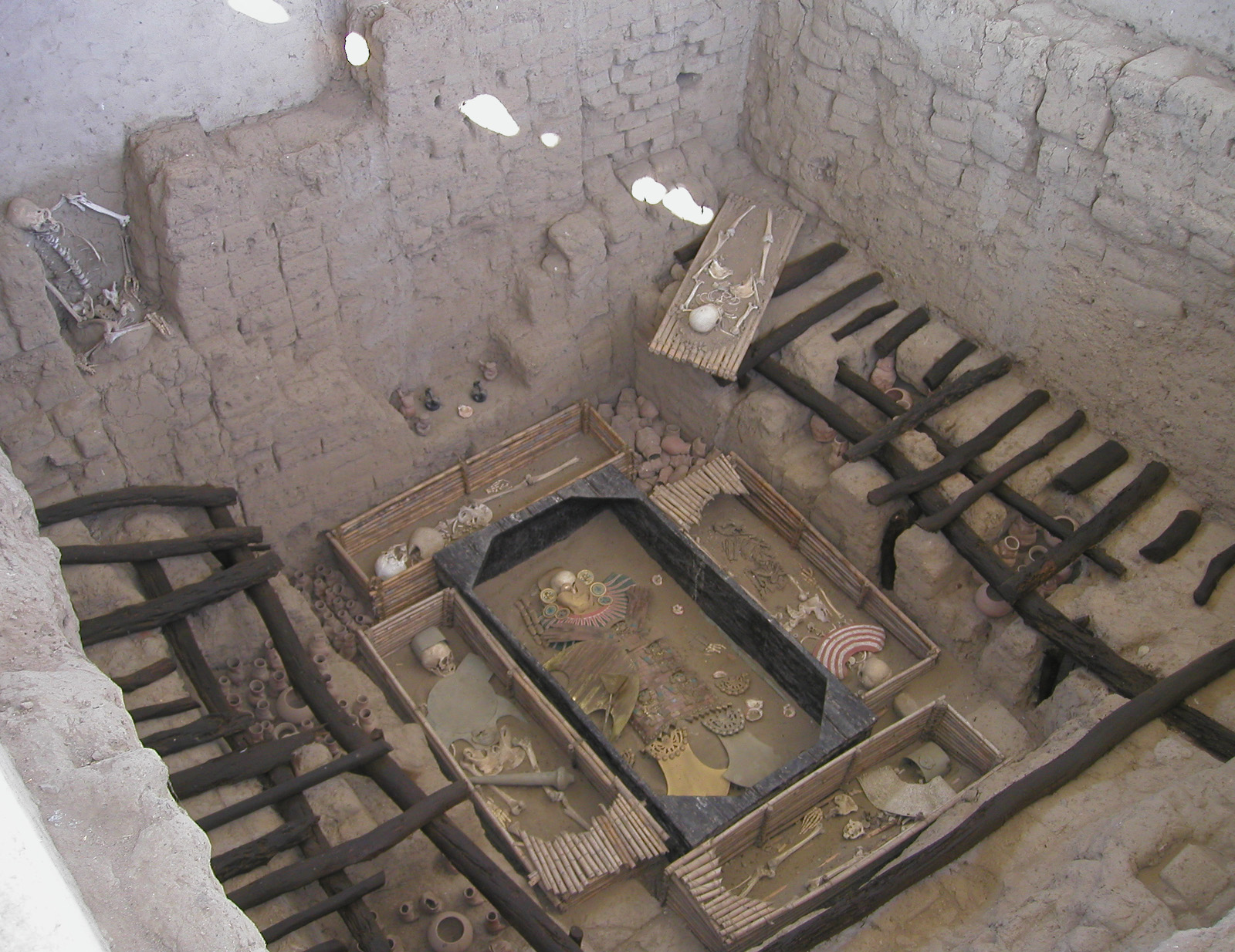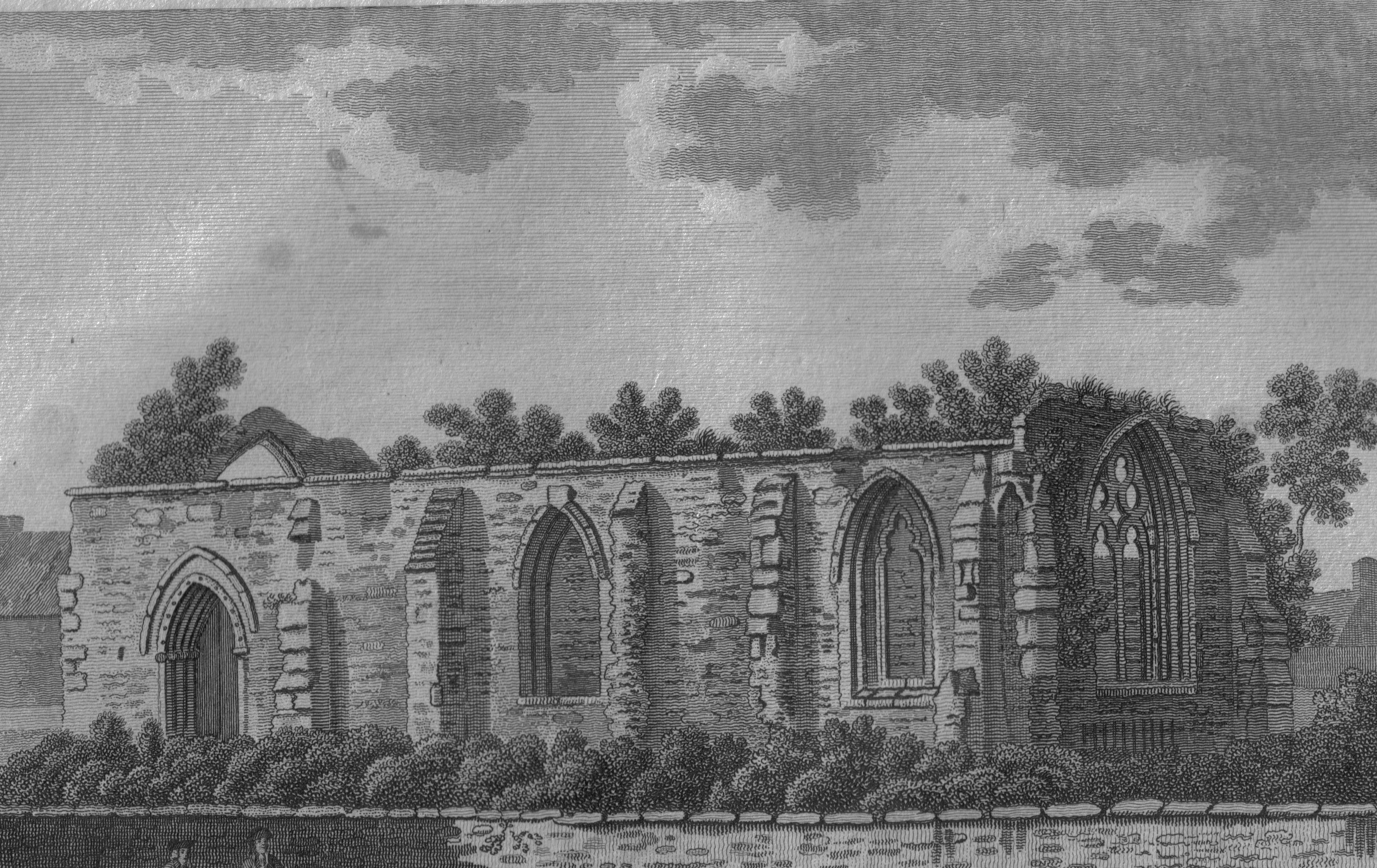|
Federico Kauffmann Doig
Federico Kauffmann Doig (born September 20, 1928) is a Peruvian historian, archaeologist, and anthropologist. He has made great contributions to the study of the civilizations of Ancient Peru, particularly on the Chavín culture and the Chachapoya culture. Early life Kauffmann Doig was born in Chiclayo, and spent his childhood and infancy in small localities of Cajamarca and Amazonas, particularly in Cocochillo (today Camporredondo) on the margin right hand of the River Marañon. His father was German but on the maternal side, he has ancestors of Scottish and Spanish origin, as well as ancestors who forged the millenary Mochica and Lambayeque or Sican cultures. On having reached his secondary studies in the College of Our Lady of Guadalupe in Lima, he entered to the Universidad Nacional Mayor de San Marcos, who would grant him two times the doctorate: first in Archaeology and then in History. Academic career Professor Doctor Federico Kauffmann-Doig was the Peruvian ambas ... [...More Info...] [...Related Items...] OR: [Wikipedia] [Google] [Baidu] |
Chiclayo
Chiclayo (; mochica language, Mochica: ''Cɥiclaiæp'') is the principal city and capital of the Lambayeque region and Chiclayo Province in northern Peru. It is located from the Pacific coast, from the city of Trujillo, Peru, Trujillo, and from the country's capital, Lima. The city was originally founded by Spanish priests as "Santa María de los Valles de Chiclayo" in the 16th century, acting as a small town of passage and rest of travelers. It was declared an official city on 15 April 1835 by president Felipe Santiago Salaverry. He named Chiclayo "the Heroic City" to recognize the courage of its citizens in the fight for independence, a title it still holds. Other nicknames for Chiclayo include "The Capital of Friendship" and the "Pearl of the North", due to its kind and friendly nature of its people. Chiclayo is Peru's List of 20 largest cities in Peru, fourth-largest city, after Lima, Arequipa, and Trujillo, with a population of 738,000 as of 2011. [...More Info...] [...Related Items...] OR: [Wikipedia] [Google] [Baidu] |
Maybole
Maybole (, ) is a town and former burgh of barony and police burgh in South Ayrshire, Scotland. It had an estimated population of in . It is situated south of Ayr and southwest of Glasgow by the Glasgow and South Western Railway. The town is bypassed by the A77 road, A77. History There are no written records or mention of the town and district until the 12th century, twelfth century although the area was indeed mentioned by the Roman Empire, Romans during their Scotland during the Roman Empire, occupation of South Scotland. The inhabitants were then known as the Damnonii, Damnii. Maybole has Middle Ages roots, receiving a charter from Donnchadh, Earl of Carrick in 1193. In 1516 it was made a burgh of regality, although for generations it remained under the suzerainty of the Clan Kennedy, afterwards Earl of Cassillis, Earls of Cassillis and (later) Marquess of Ailsa, Marquesses of Ailsa, the most powerful family in Ayrshire. The Archibald Angus Charles Kennedy, 8th Ma ... [...More Info...] [...Related Items...] OR: [Wikipedia] [Google] [Baidu] |
Historians Of Peru
A historian is a person who studies and writes about the past and is regarded as an authority on it. Historians are concerned with the continuous, methodical narrative and research of past events as relating to the human species; as well as the study of all history in time. Some historians are recognized by publications or training and experience.Herman, A. M. (1998). Occupational outlook handbook: 1998–99 edition. Indianapolis: JIST Works. Page 525. "Historian" became a professional occupation in the late nineteenth century as research universities were emerging in Germany and elsewhere. Objectivity Among historians Ancient historians In the 19th century, scholars used to study ancient Greek and Roman historians to see how generally reliable they were. In recent decades, however, scholars have focused more on the constructions, genres, and meanings that ancient historians sought to convey to their audiences. History is always written with contemporary concerns and ancient hist ... [...More Info...] [...Related Items...] OR: [Wikipedia] [Google] [Baidu] |
National University Of San Marcos Alumni
National may refer to: Common uses * Nation or country ** Nationality – a ''national'' is a person who is subject to a nation, regardless of whether the person has full rights as a citizen Places in the United States * National, Maryland, census-designated place * National, Nevada, ghost town * National, Utah, ghost town * National, West Virginia, unincorporated community Commerce * National (brand), a brand name of electronic goods from Panasonic * National Benzole (or simply known as National), former petrol station chain in the UK, merged with BP * National Book Store, a bookstore and office supplies chain in the Philippines * National Car Rental, an American rental car company * National Energy Systems, a former name of Eco Marine Power * National Entertainment Commission, a former name of the Media Rating Council * National Motor Vehicle Company, Indianapolis, Indiana, USA 1900–1924 * National Radio Company, Malden, Massachusetts, USA 1914–1991 * National Supermarke ... [...More Info...] [...Related Items...] OR: [Wikipedia] [Google] [Baidu] |
College Of Our Lady Of Guadalupe Alumni
A college (Latin: ''collegium'') may be a tertiary education, tertiary educational institution (sometimes awarding academic degree, degrees), part of a collegiate university, an institution offering vocational education, a further education institution, or a secondary school. In most of the world, a college may be a high school or secondary school, a college of further education, a training institution that awards trade qualifications, a higher-education provider that does not have university status (often without its own degree-awarding powers), or a constituent part of a university. In the United States, a college may offer undergraduate education, undergraduate programs – either as an independent institution or as the undergraduate program of a university – or it may be a residential college of a university or a Community colleges in the United States, community college, referring to (primarily public) higher education institutions that aim to provide affordable and ... [...More Info...] [...Related Items...] OR: [Wikipedia] [Google] [Baidu] |
Peruvian Anthropologists
Peruvians (''/peruanas'') are the citizens of Peru. What is now Peru has been inhabited for several millennia by cultures such as the Caral before the Spanish conquest in the 16th century. Peruvian population decreased from an estimated 5–9 million in the 1520s to around 600,000 in 1620 mainly because of infectious diseases carried by the Spanish. Spaniards and Africans arrived in large numbers in 1532 under colonial rule, mixing widely with each other and with Native Peruvians. During the Republic, there has been a gradual immigration of European people (especially from Spain and Italy, and to a lesser extent from Germany, France, Croatia, and the British Isles). Chinese and Japanese arrived in large numbers at the end of the 19th century. With 31.2 million inhabitants according to the 2017 Census. Peru is the fourth most populous country in South America. Its demographic growth rate declined from 2.6% to 1.6% between 1950 and 2000, and its population is expected to reach ... [...More Info...] [...Related Items...] OR: [Wikipedia] [Google] [Baidu] |
Peruvian People Of Scottish Descent
Peruvians (''/peruanas'') are the citizens of Peru. What is now Peru has been inhabited for several millennia by cultures such as the Caral before the Spanish conquest in the 16th century. Peruvian population decreased from an estimated 5–9 million in the 1520s to around 600,000 in 1620 mainly because of infectious diseases carried by the Spanish. Spaniards and Africans arrived in large numbers in 1532 under colonial rule, mixing widely with each other and with Native Peruvians. During the Republic, there has been a gradual immigration of European people (especially from Spain and Italy, and to a lesser extent from Germany, France, Croatia, and the British Isles). Chinese and Japanese arrived in large numbers at the end of the 19th century. With 31.2 million inhabitants according to the 2017 Census. Peru is the fourth most populous country in South America. Its demographic growth rate declined from 2.6% to 1.6% between 1950 and 2000, and its population is expected to reach ... [...More Info...] [...Related Items...] OR: [Wikipedia] [Google] [Baidu] |
Peruvian People Of German Descent
Peruvians (''/peruanas'') are the citizens of Peru. What is now Peru has been inhabited for several millennia by cultures such as the Caral before the Spanish conquest in the 16th century. Peruvian population decreased from an estimated 5–9 million in the 1520s to around 600,000 in 1620 mainly because of infectious diseases carried by the Spanish. Spaniards and Africans arrived in large numbers in 1532 under colonial rule, mixing widely with each other and with Native Peruvians. During the Republic, there has been a gradual immigration of European people (especially from Spain and Italy, and to a lesser extent from Germany, France, Croatia, and the British Isles). Chinese and Japanese arrived in large numbers at the end of the 19th century. With 31.2 million inhabitants according to the 2017 Census. Peru is the fourth most populous country in South America. Its demographic growth rate declined from 2.6% to 1.6% between 1950 and 2000, and its population is expected to ... [...More Info...] [...Related Items...] OR: [Wikipedia] [Google] [Baidu] |
Chavin Culture
Chavin may refer to: Places * Chavín de Huantar, an archaeological site in Peru built by the Chavín culture * Chavín District, Chincha, Peru * Chavín de Huantar District, Huari, Peru * Chavín de Pariarca District, Huamalies, Peru * Chavin, Indre, a commune of the Indre ''département'' in France * Chavin, Iran, a village in Kurdistan Province, Iran * The Chavín parish belonging to the municipality of Viveiro, Spain Other uses * Chinga Chavin, U.S. musician * Chavín culture The Chavín culture was a Pre-Columbian era, pre-Columbian civilization, developed in the northern Andean highlands of Peru around 900 BCE, ending around 250 BCE. It extended its influence to other civilizations along the Peruvian coast.Burger, R ..., an early culture of the Andean region, pre-dating the Moche culture in Peru * Operation Chavín de Huántar, a Peruvian military operation that ended the 1997 Japanese embassy hostage crisis * Rhinella chavin (''R. chavin''), a species of toad S ... [...More Info...] [...Related Items...] OR: [Wikipedia] [Google] [Baidu] |





